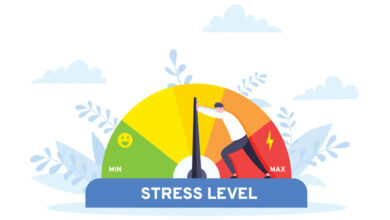
You are not losing business because of bad employees. Your automation could be driving your customers away.
A recent customer experience
I scheduled a warranty service for my car. The phone rep found my info in the system and sent me a link to verify everything on their website. After my phone call, I received text and email notifications every three days reminding me about my appointment. When I arrived at the dealer, the porter knew who I was because I was on his clipboard. I was supposed to meet with Brad. Brad was out sick. Porter promised me that I would get the next available service consultant. That was Trent.
Trent did everything he said he was going to do. He got me a loaner vehicle and explained the entire process. He called me two hours later to tell me the car was ready to pick up. He ordered the parts, they would show up in three weeks, and the dealer would take care of everything. A model of excellent customer experience. As I said, Trent was great.
So why was my experience worth writing about?
The dealership was very good at making sure I didn’t waste their time. Unfortunately, when I got there, they were perfectly comfortable wasting mine.
When Brad wasn’t available, I waited 20 minutes to talk to Trent. Trent didn’t know who I was or what I was there for. He started me as a fresh case in his customer database. Trent fought with the system the entire time. He was patient and went out of his way to help. The system wouldn’t let him because he wasn’t Brad.
When I came back to pick up my car, the same porter scanned me in, handed me water, and helped me unload the vehicle. I was on his clipboard. He said Brad wasn’t there so a service tech would be with me ASAP. I said, “Trent is working with me.” He said, “Great, Trent is here today,” then promptly disappeared. I wandered the dealership for about 15 minutes trying to figure out what to do next and spoke with four different associates and had various versions of the same conversation:
- Me: “Hi, I’m here to pick up my car, it’s ready.”
- Them: “It says here you are working with Brad?”
- Me: “No, I’m working with Trent.”
- Them: “Oh, OK. The system still has you with Brad. Trent should be around here somewhere.”
- Me: “Trent said my car is ready, can you have somebody bring it out while I wait for him?”
- Them: “No, I’m sorry, the system won’t let me do that.”
When I finally found Trent, he was with another customer. I waited another 20 minutes so he could radio a porter to pull the car around. Eventually, he walked me to my car and sent me on my way.
The dealership deployed some very useful automation, which, under perfect circumstances, would have made the entire process very pleasant. When circumstances interrupted their perfect system, everything fell apart.
Every now and then, there will be bad days. They are unavoidable.
So, what’s the problem?
The next day, I got a survey from the dealer, asking me all about Trent. Did he greet me? Was he friendly? Was he accommodating? Then a bunch of unrelated questions. Was the facility clean? Did the porter help me into and out of the car? Was I offered coffee or a bottle of water?
As you can expect, I gave them all fives. They excelled at all those factors. Then they proceeded to the NPS score questions:
- Did you like your experience with our products and/or services? No.
- Would you buy again? No.
- Would you tell others to buy? No.
Customer satisfaction surveys are supposed to discover the truth and verify accountability, not rubberstamp incorrect assumptions.
Why automation can be dangerous
If you ever get an unbalanced survey like this from a customer: Your business is in trouble. It means you have no idea what your customer experience is like.
Think about this for a second:
- If the cable guy was nice and went out of his way to provide the best customer service, but the system sent him with the wrong equipment, is it his fault or the company?
- If the clerk behind the counter at the rental car office is cheerful and professional, but the car is a piece of junk, is that a customer service problem?
- If you love your dentist but the health provider’s scheduling system double-books you with another patient, is that a good customer experience or a bad customer experience?
Employees take a lot of blame for corrupt and incompetent systems because consumers feel powerless against faceless corporate management and outdated software integration. The result is employees who A) cut corners to avoid being punished for bad surveys, or B) show indifference to customer needs because they are powerless to do anything about it.
When you have angry customers and disengaged employees, your business will suffer. NPS scores and satisfaction surveys will never expose those problems. Lots of customers simply leave and never come back.
So, what’s the solution?
Buy something from yourself every once in a while. Play the “What If” game to test your processes. Use secret shoppers. Ask open-ended questions in your customer satisfaction surveys. Try to separate the elements of the customer experience to find out if it’s the product, the employee, or the system that is to blame for a poor customer experience. Automation is great for scale, maximizing resources, and dealing with labor shortages, but sometimes the system is the problem.
Today I got an email asking why I never showed up for Brad’s appointment and if I would like to reschedule. If you’re not careful, you might automate yourself out of business.



